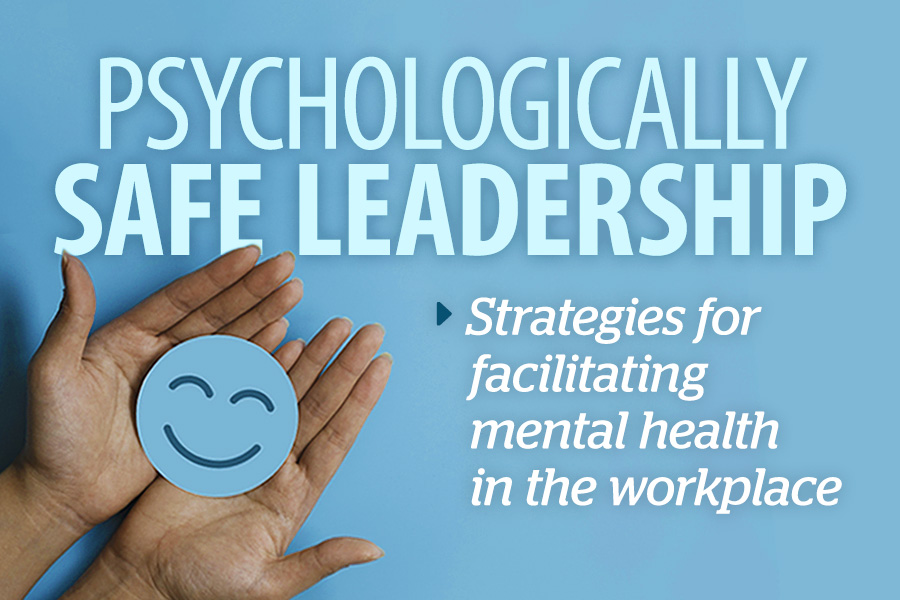
Psychologically safe leaders anticipate conflict
By Bill Howatt and Troy Winters
When managed correctly, conflict can spark creativity and align expectations

EDITOR’S NOTE: ‘Psychologically Safe Leadership: Strategies for facilitating mental health in the workplace’ is a web series in partnership with Dr. Bill Howatt of Howatt HR Consulting in Ottawa, and Troy Winters, senior health and safety officer at the Canadian Union of Public Employees (CUPE) in Ottawa.
“Leaders who anticipate and talk about workplace conflict with their workforce acknowledge conflict happens and that not all conflict is bad.” – Dr. Bill Howatt
While there is little chance a leader will have no conflict in the workplace, many leaders get stressed, frustrated and upset when conflict happens.
Why? One reason is they have created a flawed belief system that to be a successful leader they must have little to no conflict. In their mind, conflict is bad. But workplace conflict does not have to be bad.
Even the most psychologically safe leaders experience some degree of conflict. Conflict happens in the workplace when two or more parties have different points of view or have perceived something as hurtful or a breach of personal preferences or values.
A conflict may not be the main challenge for leaders; it is how the parties involved deal with it. Sometimes, a simple conflict can escalate to a bitter dispute because of emotions.
Conflict can result in acting-out behaviours such as avoidance, insults, gossip, passive-aggressiveness and anger. Negative fallout can include increased work disruptions, lost time, decreased productivity, increased stress, and projects put at risk.
Leaders’ mindset on conflict matters
A psychologically safe leader anticipates the kinds of conflict that could happen in their workplace by leveraging their curiosity and asking questions. Their attitude matters because their role is not to stop conflict, but to anticipate and plan for it.
A part of anticipating and planning is educating the workforce that conflict does not have to be bad. It can be positive when dealt with professionally, without judgement, and avoiding talking over another person, using profane language, aggressive body gestures or yelling.
Psychologically safe leaders accept that conflict can spark creativity and align expectations when managed correctly and dealt with calmly and openly. They acknowledge that conflict can also bring individuals and teams closer when appropriately handled.
Unresolved conflict can result in the opposite effect, such as employees’ increased concerns about psychological safety.
Anticipating conflict begins with a frame of reference for common sources such as:
- unsure about performance expectations
- unclear about role clarification
- trust issues around transparency of communications
- experiences that facilitate acts of incivility
- concerns around work demand
- work cutting into personal time
- feeling overwhelmed because of a lack of resources
- perceiving one is being unfairly judged.
A psychologically safe leader must be mindful that they have only one lens through which to see the world. They always need to understand their employees’ experiences and be willing to talk about their position on conflict.
Psychologically Safe Workplace Awards provide employers tools, data on mental health
Tips to prepare for conflict
Conflict does not mean a leader or anyone else is doing anything wrong. Psychologically safe leaders do not judge individuals. They see conflict as a byproduct of some circumstance that requires resolution.
To develop this core competency, a psychologically safe leader must understand that when employees perceive they are in conflict, they are also experiencing fear. By anticipating conflict, leaders are more open to employees’ feelings and less likely to devalue or ignore them.
Following are some actions a psychologically safe leader can take to help themselves and their employees prepare for conflict:
Set realistic expectations on workplace conflict: Unhealthy conflict can put employees at risk of mental or physical harm. Set the expectation that conflict can be an opportunity for learning and discovering new and better ways to operate.
Be realistic and acknowledge that not all conflict is bad.
Discover the conflict landscape: Do not assume you are the keeper and knower of the employee experience. You may not know what employees are feeling.
Think about Dr. Seuss’s engaging children’s book Green Eggs and Ham that promotes the benefits of curiosity through open-ended questions. Avoid assuming or guessing what may be causing conflict.
Ask direct reports and peers: “What are the top three causes of conflict in this workplace? How do you find these situations are typically dealt with?”
Talk about conflict often: Engage direct reports in conversation about the types of conflict that can happen: unhealthy and healthy.
Unhealthy conflict is when conflict puts others at risk of mental or physical harm. Healthy conflict is a difference of opinion and preferences as to how things should be.
Talk about conflict with employees to anticipate that it will happen and not to avoid it.
 Dr. Bill Howatt is the Ottawa-based president of Howatt HR Consulting in Ottawa.
Dr. Bill Howatt is the Ottawa-based president of Howatt HR Consulting in Ottawa.

Troy Winters is a senior health and safety officer at the Canadian Union of Public Employees (CUPE) in Ottawa.